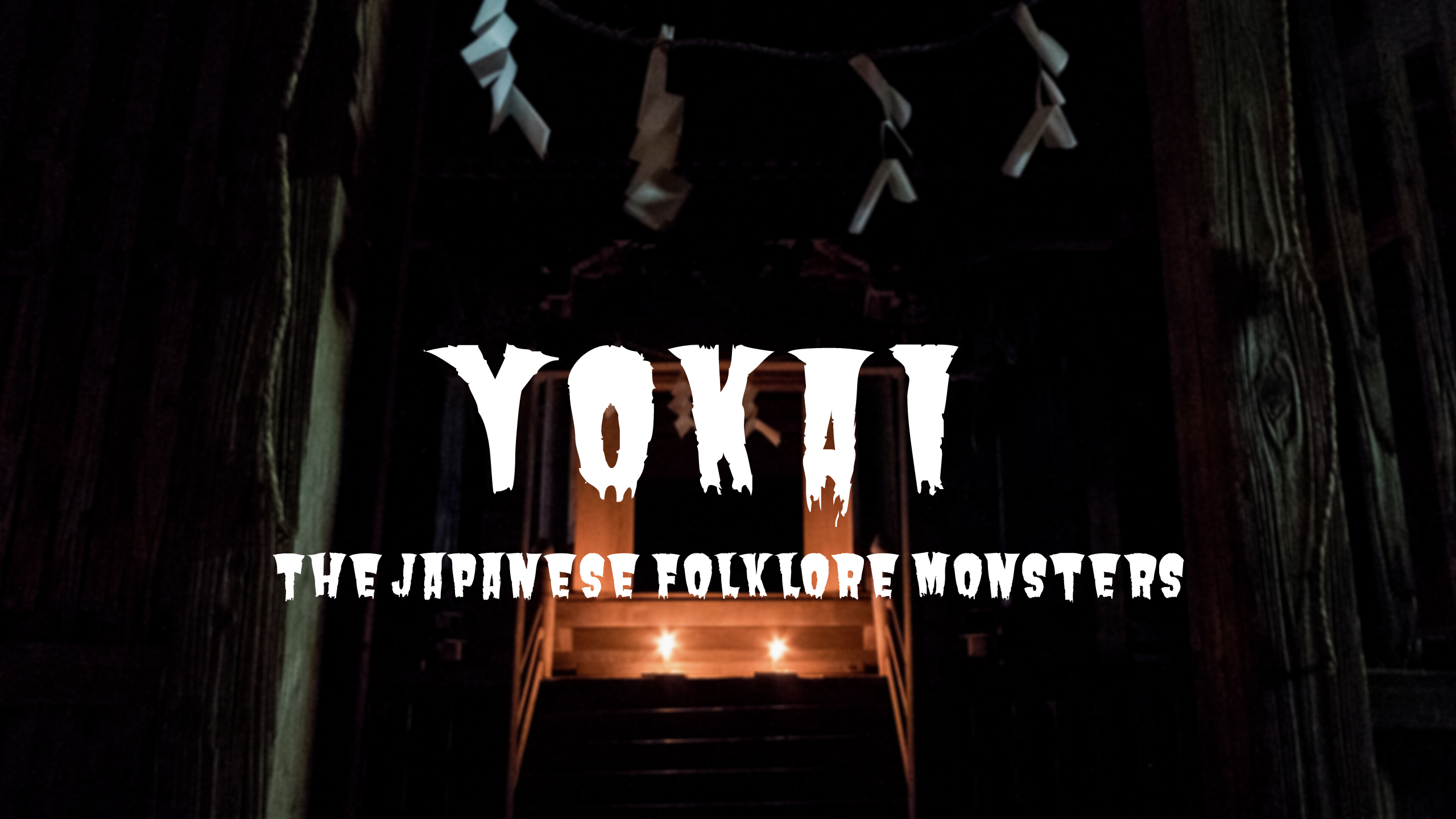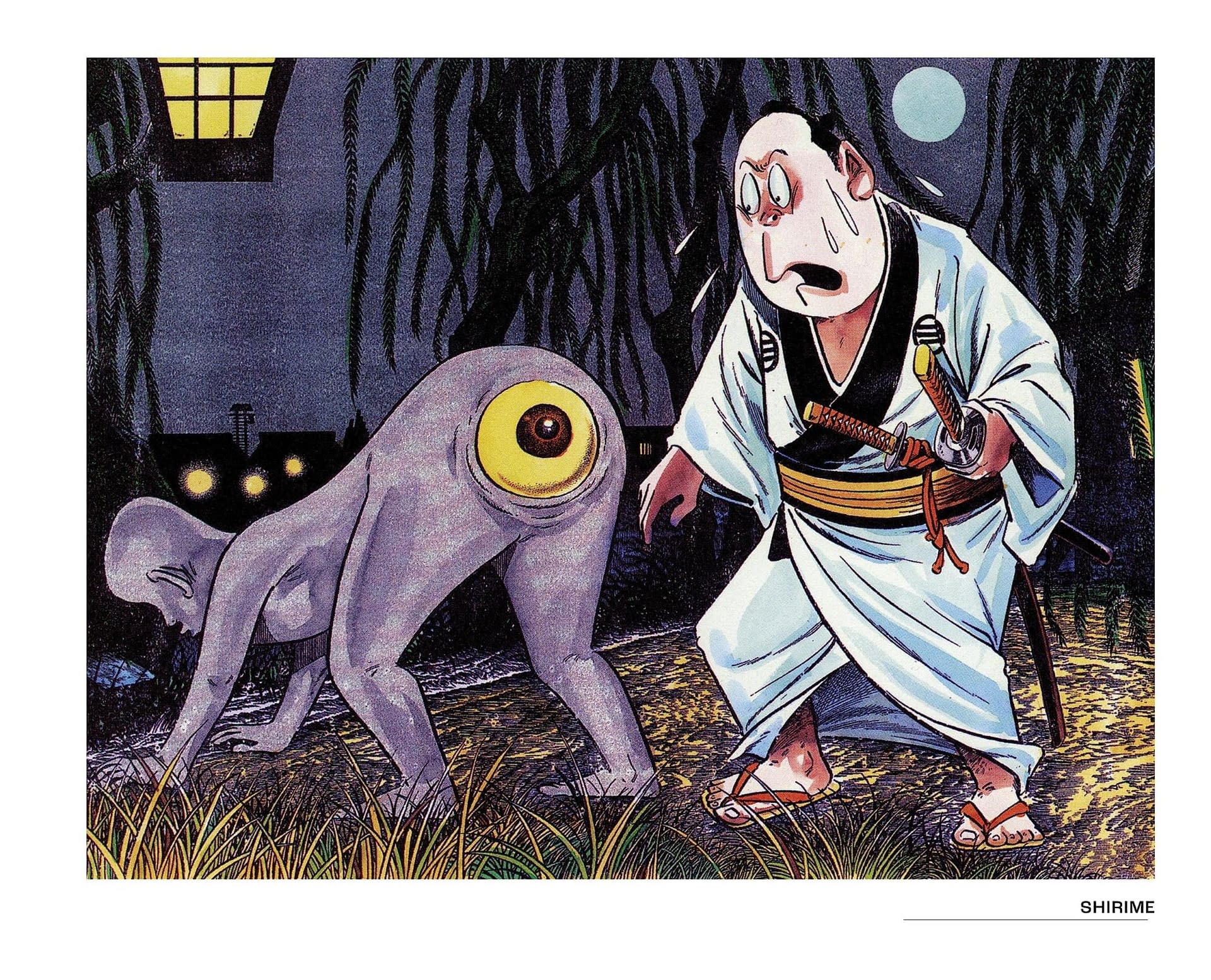We realize there are numerous questions about Shigeru Mizuki: Master Of Japanese Yokai And Folklore and that's why after doing some analysis, digging information, made Shigeru Mizuki: Master Of Japanese Yokai And Folklore we put together this Shigeru Mizuki: Master Of Japanese Yokai And Folklore guide to help target audience make the right decision.

ArtStation - Jorogumo, Mona Finden | Concept art characters, Japanese - Source www.pinterest.ca
FAQ
This section provides answers to frequently asked questions regarding Shigeru Mizuki, a renowned master of Japanese yōkai and folklore. Explore common inquiries and gain insights into Mizuki's artistic contributions and the cultural significance of yōkai in Japanese tradition.

Shigeru Mizuki: Japanese Folklore and Monster Illustrations - Source www.pinterest.com
Question 1: What is the significance of Shigeru Mizuki in Japanese culture?
Shigeru Mizuki is widely acclaimed as the "Father of Japanese Yōkai" for his prolific work in preserving and popularizing the country's rich folkloric heritage. Through his captivating illustrations and engaging narratives, he has played a crucial role in fostering a renewed appreciation for these mythical creatures, contributing to the enduring fascination with yōkai in Japan and beyond.
Question 2: What is the relationship between Mizuki's work and Japanese folklore?
Mizuki's work draws heavily upon traditional Japanese folklore, specifically the vast repertoire of yōkai—supernatural beings that occupy a prominent place in Japanese mythology and belief systems. By meticulously researching and depicting these creatures in his art, Mizuki has helped to preserve and disseminate this cultural legacy, ensuring that these often-overlooked aspects of Japanese heritage remain vibrant and accessible to contemporary audiences.
Question 3: How have Mizuki's contributions influenced the perception of yōkai in Japan?
Mizuki's work has significantly influenced the way yōkai are perceived in Japan. Through his accessible and entertaining depictions, he has dispelled common misconceptions surrounding these creatures, replacing fear and superstition with a sense of curiosity and appreciation. As a result, yōkai have become increasingly popular in modern Japanese culture, inspiring numerous works of art, literature, and entertainment that celebrate their enduring cultural resonance.
Question 4: Where can I find more information about Shigeru Mizuki and his work?
Various resources are available to delve deeper into the life and work of Shigeru Mizuki. The Mizuki Shigeru Museum in Sakaiminato, Japan, offers an extensive collection of his original artwork and personal artifacts. Additionally, numerous books and articles have been published on Mizuki and his contributions to Japanese culture, providing in-depth analyses and insights into his artistic legacy.
Question 5: How can I learn more about Japanese yōkai?
Exploring the rich tapestry of Japanese folklore and mythology provides a profound way to gain insights into the cultural significance of yōkai. Visiting shrines and temples dedicated to these creatures offers a tangible connection to their historical and spiritual roots. Additionally, participating in traditional festivals and events often features yōkai-themed performances and exhibitions, allowing visitors to engage with these mythical beings in a dynamic and immersive setting.
Question 6: What is the importance of preserving yōkai folklore in today's world?
Preserving yōkai folklore holds immense importance in the contemporary world. These mythical creatures embody the collective imagination and belief systems of generations past, offering insights into the cultural psyche and the relationship between humans and the supernatural. By safeguarding this rich heritage, we ensure that future generations can continue to appreciate and draw inspiration from the wisdom and creativity embedded within these tales.
To further your exploration of Shigeru Mizuki's remarkable contributions and the captivating world of Japanese yōkai, delve into the comprehensive article Shigeru Mizuki: Master Of Japanese Yokai And Folklore
Tips
Shigeru Mizuki, the acclaimed Japanese artist, devoted his life to documenting yokai – the fascinating spirits, demons, and supernatural beings that form an integral part of Japanese folklore and history. With decades of experience and an unmatched depth of knowledge, Mizuki's legacy offers invaluable insights for those seeking to delve into this captivating world.
Tip 1: Embrace the Diversity of Yokai
Yokai encompass an extraordinary range of forms and behaviors. Mizuki's work showcases the vast spectrum, from ethereal spirits to mischievous goblins and fearsome ogres. Each yokai holds a unique story, purpose, and connection to Japanese culture, enriching the tapestry of tradition.
Tip 2: Explore the Regional Variations
Yokai are not confined to a single region; their presence is woven into the fabric of every corner of Japan. Mizuki's tireless travels revealed the regional variations in yokai lore, demonstrating the deep connection between these creatures and the distinctive characteristics of different areas.
Tip 3: Delve into the Historical Context
The origins and evolution of yokai are inextricably linked to Japan's rich history. Mizuki's work explores the fascinating interplay between yokai beliefs, societal norms, and historical events. Understanding this context provides a deeper appreciation for the relevance and significance of yokai in Japanese culture.
Tip 4: Study the Folkloric Significance
Yokai are not mere curiosities; they carry cultural significance and meaning. Mizuki's meticulous research revealed the diverse roles yokai play in Japanese folklore. Some serve as guardians or bringers of good fortune, while others warn of impending danger or embody the fears and aspirations of the human psyche.
Tip 5: Respect the Ancient Tradition
Yokai are a living part of Japanese culture, continuing to inspire artists, writers, and filmmakers. When exploring these fascinating creatures, it is essential to approach them with respect and humility. Mizuki's work serves as a testament to the enduring power of this tradition, reminding us to preserve and celebrate its cultural heritage.
In conclusion, Shigeru Mizuki's unparalleled contributions to the study and appreciation of yokai offer an invaluable roadmap for anyone seeking to explore the rich tapestry of Japanese folklore. By embracing the diversity, regional variations, historical context, folkloric significance, and ancient tradition of yokai, we gain a deeper understanding of the enduring fascination they hold in Japanese culture.
Shigeru Mizuki: Master Of Japanese Yokai And Folklore
Shigeru Mizuki's dedication to preserving and promoting Japanese folklore, particularly its yokai (supernatural beings), has earned him the title of "Master of Japanese Yokai and Folklore". His extensive works, including the famous "GeGeGe no Kitaro" series, have played a pivotal role in shaping the public's understanding and appreciation of these mythical creatures.
- Yokai Encyclopedia: Mizuki's meticulous research and compilation of over 500 yokai in his "Mizuki Shigeru's Yokai Encyclopedia" serves as a comprehensive reference for scholars and enthusiasts alike.
- Manga Masterpiece: Through his "GeGeGe no Kitaro" manga series, Mizuki brought yokai to life, creating a beloved and enduring tale that has captivated generations.
- Cultural Ambassador: Mizuki's works have transcended borders, introducing Japanese folklore to a global audience and fostering cross-cultural exchange.
- Historical Insights: Mizuki's yokai often reflected social and historical events, providing valuable insights into Japanese culture and the human condition.
- Preservation and Education: Mizuki's dedication to preserving and educating about yokai has contributed to the safeguarding of Japan's rich cultural heritage.
- Anime Adaptation: The success of "GeGeGe no Kitaro" has led to numerous anime adaptations, further extending its reach and impact on popular culture.
These key aspects highlight Mizuki's multifaceted contributions as a scholar, artist, and cultural ambassador. Through his tireless efforts, he has not only preserved Japan's yokai folklore but also transformed these mythical creatures into symbols of Japanese identity and creativity. Mizuki's legacy continues to inspire and inform, ensuring that the realm of yokai remains an integral part of Japan's cultural landscape.

Shigeru Mizuki with a statue of Kitaro from the manga he created called - Source www.pinterest.se

Yokai: The Japanese Folklore Monsters - Japan Web Magazine - Source jw-webmagazine.com
Shigeru Mizuki: Master Of Japanese Yokai And Folklore
Shigeru Mizuki is a Japanese manga artist known for his works on the supernatural and folklore. He is considered a master of the yokai genre, which features stories about supernatural creatures from Japanese folklore. Mizuki's work has helped to popularize yokai and introduce them to a wider audience.

Coillecting Yokai: The Art of Shigeru Mizuki For 2024 - Source bleedingcool.com
Mizuki's interest in yokai began in his childhood. He was fascinated by the stories his grandmother told him about these creatures. As he grew older, he began to collect books and articles on yokai and folklore. In 1960, he published his first book on yokai, "Nihon Yokai Gashu" (translated as "The Book of Japanese Yokai"). This book was a collection of stories and illustrations of yokai from all over Japan.
Mizuki's work has had a profound impact on Japanese culture. He has helped to revive interest in yokai and folklore and has inspired other artists to create their own works on these subjects. His work has also been praised for its accuracy and scholarship.
"Shigeru Mizuki: Master of Japanese Yokai and Folklore" is a exploration of the life and work of Shigeru Mizuki, a Japanese manga artist known for his works on the supernatural and folklore and is considered a master of the yokai genre. This article discusses Mizuki's interest in yokai began in his childhood. He was fascinated by the stories his grandmother told him about these creatures. As he grew older, he began to collect books and articles on yokai and folklore. In 1960, he published his first book on yokai, "Nihon Yokai Gashu" (translated as "The Book of Japanese Yokai"). This book was a collection of stories and illustrations of yokai from all over Japan. His work has helped to revive interest in yokai and folklore and has inspired other artists to create their own works on these subjects.
Conclusion
Shigeru Mizuki's work has had a profound impact on Japanese culture. He is considered a master of the yokai genre, and his work has helped to revive interest in yokai and folklore. He has also inspired other artists to create their own works on these subjects.
Mizuki's work is important because it helps to preserve Japanese culture and traditions. His stories and illustrations provide a glimpse into the world of yokai and folklore, and they offer a valuable resource for scholars and students of Japanese culture.